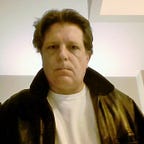Heavyweight Boxer
Donald Judd at MoMA
I managed to get to “Judd” just under the wire, on a frigid January Saturday right after the New Year. Donald Judd, who died in 1994, has long been one of my favorite artists, as well as a primary influence on my own decidedly amateur artistic practice. I had seen only a scattered handful of his artworks before, and never more than one by itself, as part of a collection. Seeing the entire range of his output on display was an overwhelming experience.
With his metal and plexiglass boxes, cubes, stacks of shelves, and other manufactured objects which compose his oeuvre, Judd “changed the vocabulary of modern sculpture,” in the words of curator Ann Temkin. His emphasis on an extremely limited morphological vocabulary was uncompromising and relentless; “the main virtue of geometric shapes,” he wrote in 1967, “is that they aren’t organic, as all art otherwise is.” This was a new thing. The appeal to me, all these decades later, lies not just in the aesthetic quality of his austere, forbidding objects, but their theoretical armature in a web of dense manifestos and gnomic statements, of which the made objects can be considered only the tangible reifications.
Temkin’s installation of Judd’s retrospective is, in David Salle’s words, “handsome, concise, and even-tempered,” all Juddean virtues in themselves. Spaced out over four large rooms on MoMA’s sixth floor, the pieces seemed almost to be in conversation with each other; as you move through the galleries, an infinity of lines and angles continually swim into view, juxtaposing themselves against further geometries beyond. It is cliched and pointless to say that certain works of art must be seen first-hand to be appreciated, and yet the statement rises ineluctably to mind. As Temkin and others have pointed out, Judd’s true medium is space — the boxes and cubes and squares are essentially carving out of the air around them negative space, making the viewer aware of their physicality, their here-ness, their this-ness.
The privilege of being able to see these objects for oneself, as opposed to mediated by a screen or a reproduction, manifested itself by producing three specific observations that felt new, at least to me. The first is that being in the gallery makes one aware of how important to Judd’s work shadows are. While observing a stack of boxes such as Untitled (DS123; 1968), I suddenly perceived how the grid of faint shadows cast upon the wall by the museum’s lighting became, in itself, a kind of shifting visual counterpoint to the stack proper. The effect of the colored plexiglass that Judd uses as a component of several of his formulations was similarly striking. When the viewer moves, the color cast by the plexiglass also shifts; a kind of liquid painting in air, a pane of color dancing endlessly inside the rectangles of wood or steel.
The third conclusion I came to is that to my mind Judd must be considered a first-rank colorist, on the strength of the brightly enameled rows of shelf-like boxes that he began creating in the early 1980s. At some point Judd had somehow found a German company that manufactured industrial paints in very precise colors — a kind of proto-Pantone Matching System — which he proceed to incorporate into these sleek yet eye-pleasing sculptures. (There are a series of preparatory sketches that are slightly bonkers in their specificity and pugnacity; they look like a hardware store paint chip wall reworked by a hyperactive three-year-old.) The resultant combinations are as crisp and hypnotic as an Albers — “your eye bounces along the colors in a new way,” as Salle puts it. This is an element of his greatness that had until now escaped me.
Due to the timed entry policy necessitated by COVID-19, the galleries were less crowded than usual. Many visitors reacted to Judd’s objects by taking photos of each other through their spaces and interstices, using them as giant props for selfies. Normally I abhor this kind of clowning, but perhaps as an effect of my long isolation, it struck me as not just harmless but as an active, albeit unsophisticated, testament to the power of Judd’s art, the way it itself is a framing and interrogation of the act of vision.
Usually I do the best I can to get my money’s worth at MoMA — entry is now $25, which ain’t exactly chicken feed! — but there was something about the purity of the experience, its singularity, that I wanted to hold on to: I wanted to carry the feeling home with me, the way you do after a great ballgame or concert or opera. Anything that produces this very specific feeling must, in my estimation, be an aesthetic experience of a very high order. So instead of going in search of the familiar Cezannes or Hoppers or de Koonings or Johnses that I love, I came down all the escalators and straight out onto 53rd Street, and home.
